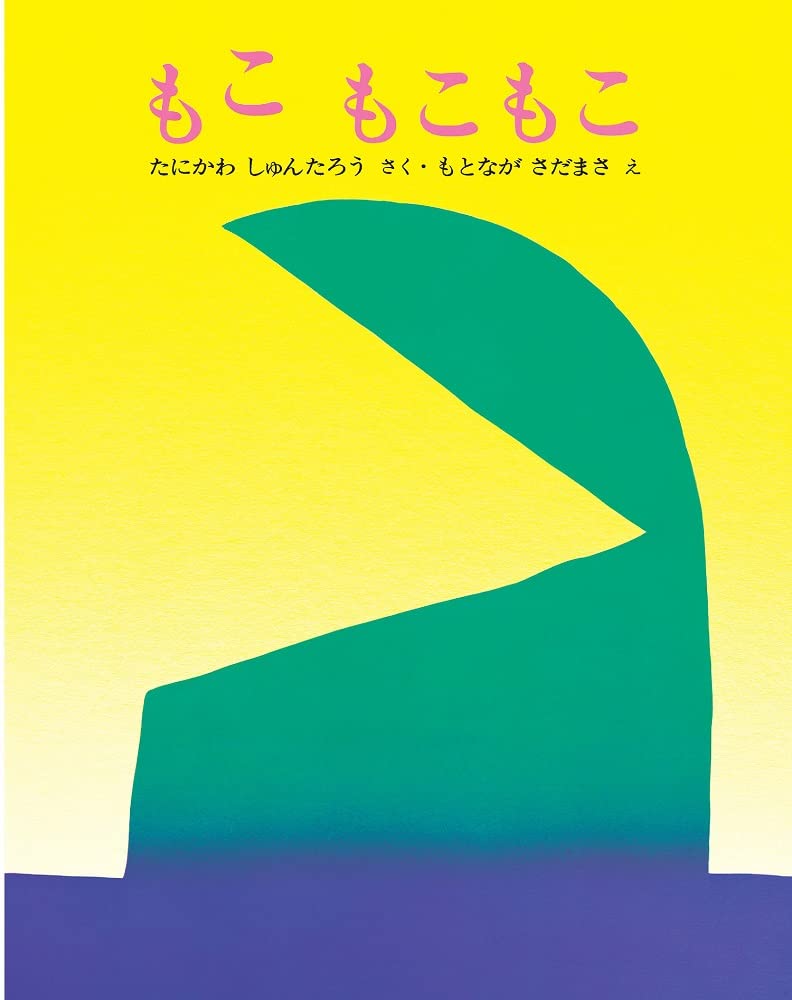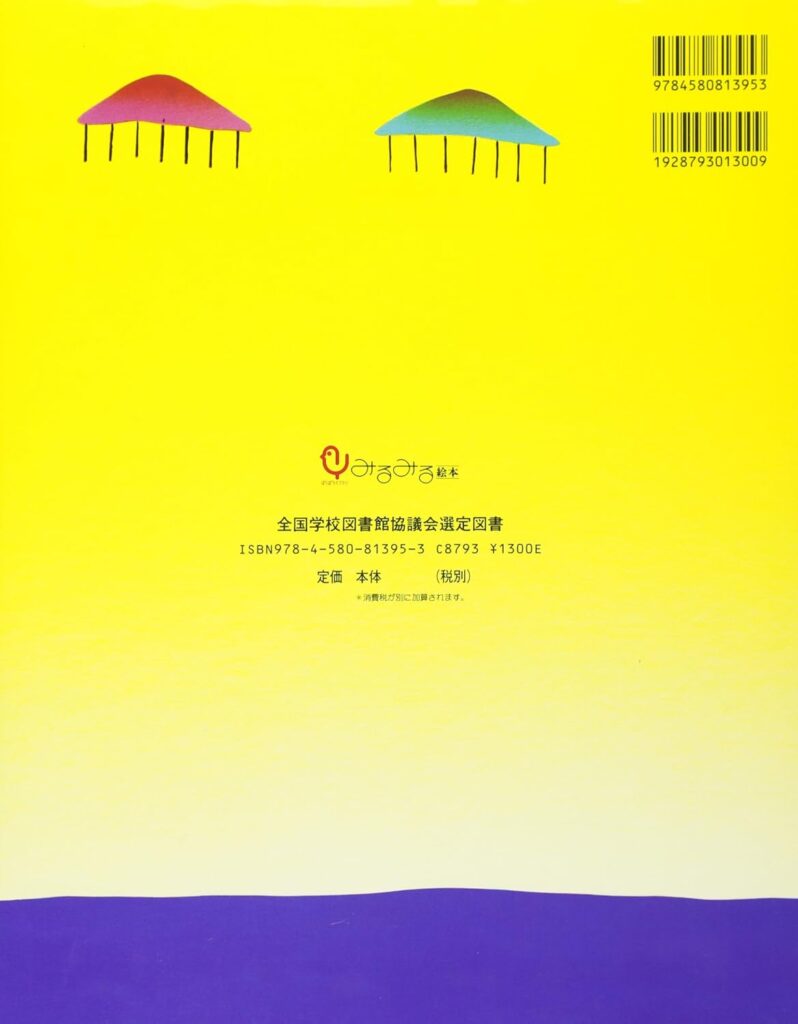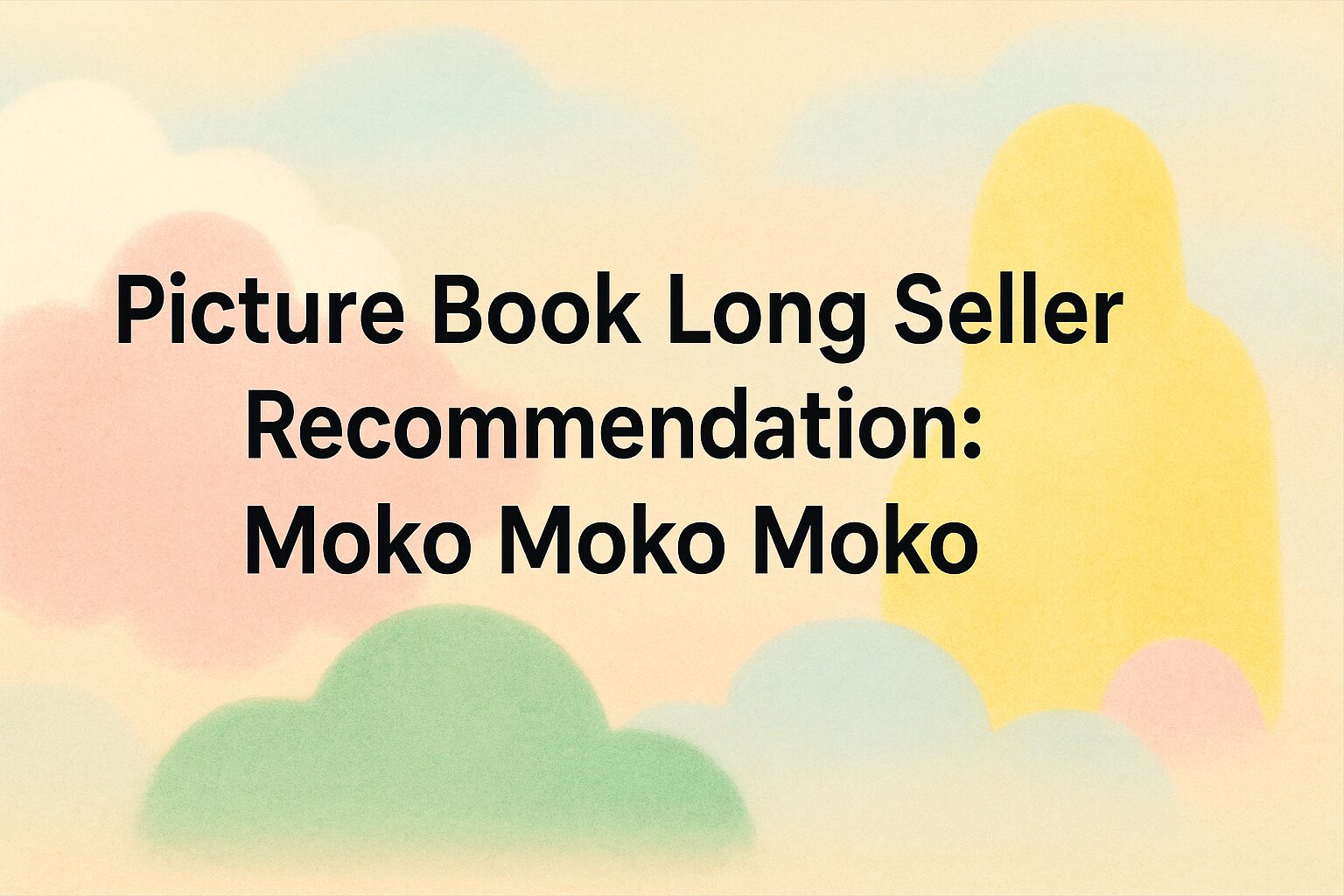Introduction
Since its first release on April 25, 1977, Moko Moko Moko has been loved by children for over 40 years. Written by Shuntaro Tanikawa and illustrated by Sadamasa Motonaga, this gently rhythmic picture book is not so much “read” as it is “experienced.” Every page bursts with onomatopoeia and bold, abstract colors that invite readers—young and old—to let their imaginations roam. In this post, we’ll explore why the long-selling picture book Moko Moko Moko continues to enchant families and classrooms alike.

1. What Is “Moko Moko Moko”?
- Author (Text): Shuntaro Tanikawa
A celebrated poet, Tanikawa is known for capturing children’s everyday sounds and emotions in simple, evocative language. - Illustrator: Sadamasa Motonaga
A world-renowned modern artist, Motonaga’s bold abstraction and vivid color palette spark curiosity and wonder in every viewer. - Publisher: Bunken Publishing (Shinko Shuppansha Keirinkan)
- Release Date: April 25, 1977
- Dimensions & Format: Mini Edition – 28.5 × 22.5 cm, 29 pages
- Price: ¥1,650 (tax included)
Moko Moko Moko is best described as an experience of sound, word, and color in harmony. When you turn the first page, you won’t find a conventional story. Instead, you encounter a cascade of onomatopoeic sounds—“moko,” “fuwafu,” “nyoki”—each paired with a burst of bright, abstract shapes. Even babies who cannot yet speak respond to the rhythm, while adults rediscover the joy of seeing words and colors in a fresh way.
2. Release Date, Recommended Age, and Editions
Release Date: April 25, 1977
When it first hit shelves, it did not skyrocket to instant fame. But word of mouth spread quickly, and today it proudly holds a spot in bookstores as a timeless long seller, more than four decades after publication.
Recommended Age: Although marketed for children aged 2–5 years, Moko Moko Moko truly delights readers of all ages—from babies responding to sound, to preschoolers expanding their imaginations, to adults appreciating the bold art.
- 2–3 Years Old: Young toddlers delight in the playful sounds. As the adult reads aloud, they respond to the rhythm and vibrant shapes.
- 4–5 Years Old: Preschoolers begin to wonder, “What does this shape represent? Is it food or an animal?” Their imaginations fill in the blank pages.
- Adults: Parents and teachers rediscover the beauty of language and color. The simple, meditative flow offers a moment of calm in busy days.
Editions:
- Mini Edition: 28.5 × 22.5 cm, 29 pages; ¥1,650 (tax included)
- Large Format Edition (Published March 2006): 44 × 35 cm, 29 pages; ¥9,350 (tax included). This oversized version is ideal for classroom read-alouds, where every child can see the bold colors on each page.
3. Key Features and Highlights
- Playful Onomatopoeia and Rhythm
Words like “moko,” “fuwafunwan,” “nyoki,” and “paku” may seem abstract at first, but they form a delightful rhythm that even toddlers understand intuitively. Without any traditional narrative, each page unfolds as a new sound-and-color adventure. - Sadamasa Motonaga’s Bold Abstract Art
Motonaga uses primary colors and simple shapes that evolve from page to page. From the perspective of a baby, the high contrast draws attention. From an adult’s perspective, the painting’s abstraction invites deeper reflection on form and color. - Endless Imagination at Play
Because there is no explicit storyline, every reader can project their own images and ideas. Parents might ask, “Could that be a flower? A fluffy cloud? Something delicious?” Each reading brings fresh discoveries—perfect for interactive read-alouds.

4. Sales Figures & Why It Remains a Long Seller
Cumulative Sales:
By April 2014, Moko Moko Moko had sold over 1,042,670 copies (85 printings), earning its place as a million-copy picture book in Japan. As of 2025, estimated total sales exceed 1.1 million copies.
Reasons for 40+ Years of Popularity:
- A Universal Experience of Imagination
With no fixed story, readers of all generations can imagine freely. This “open canvas” approach keeps the experience fresh, even after decades. - Perfect for Developing Early Language Skills
Toddlers aged 2–3 are naturally drawn to onomatopoeia and rhythm. The playful sounds in Moko Moko Moko align perfectly with that developmental stage. - Art That Appeals to All Ages
Motonaga’s abstract, primary-colored shapes captivate children’s senses and simultaneously offer adults an aesthetically pleasing, artful experience. It’s often chosen for gifts and classroom libraries, ensuring it remains in circulation. - Growing Interest in Shared Read-Aloud Time
As more families and educators emphasize the value of reading aloud, classic picture books like Moko Moko Moko enjoy renewed interest. Libraries and preschools often list it as a recommended staple.
5. Recommended Occasions to Read “Moko Moko Moko”
- First-Time Read-Aloud: For 2-year-olds experiencing someone reading a book aloud for the first time, the clean graphics and simple sounds make Moko Moko Moko a perfect introduction.
- Classroom Story Time: With the large-format edition, a teacher can show every bold page to a whole group of preschoolers. As the class chants “moko moko moko,” the shared rhythm creates a lively and imaginative atmosphere.
- Early Art Education: Many museums and parents encourage introducing abstract art early. Moko Moko Moko serves as a gentle, playful art lesson—children learn color relationships and shapes by immersing themselves in the pages.
- A Calming Break for Parents: While reading aloud, parents can gaze at Motonaga’s sweeping brushstrokes. The meditative flow offers a moment of calm in busy days, fostering a special bonding moment.
6. Where to Buy & Related Resources
Where to Purchase:
Available on Amazon Japan and major bookstores in both mini and large formats:
- Mini Edition (ISBN: 978-4580813953; ¥1,650 tax included)
- Large Format Edition (ISBN: 978-4-580-81580-3; ¥9,350 tax included)
Check Your Local Library:
Most public libraries, children’s libraries, and preschools in Japan hold multiple copies. If you’d like to preview it first, check your neighborhood library’s children’s section.
Online Extras:
Sites such as Ehon Navi often feature readings of Moko Moko Moko narrated by various storytellers. You can also find interviews with Shuntaro Tanikawa and Sadamasa Motonaga detailing the creative process behind this book.
7. Conclusion
Moko Moko Moko remains a beloved classic more than four decades after its April 25, 1977 debut, with over 1.1 million copies sold. Its simple onomatopoeic text and vibrant abstract art continue to spark imagination in children aged 2–5 and captivate adults. Because there is no set “story,” each reading is an opportunity for discovery—perfect for growing minds and artistic spirits alike.
Whether you’re a parent reading aloud for the first time, a preschool teacher searching for a classroom staple, or someone looking for a thoughtful gift, Moko Moko Moko offers a unique sensory experience that transcends generations.
Turn the page today, and let your family discover the magic of “moko moko mok o”—where words and colors blend into a world of endless imagination.
Note: Sales data and information are based on Bunken Publishing and related sources. By 2014, cumulative sales surpassed 1,042,670 copies; subsequent printings have pushed the total beyond 1.1 million as of 2025.



comment Please enter a comment.